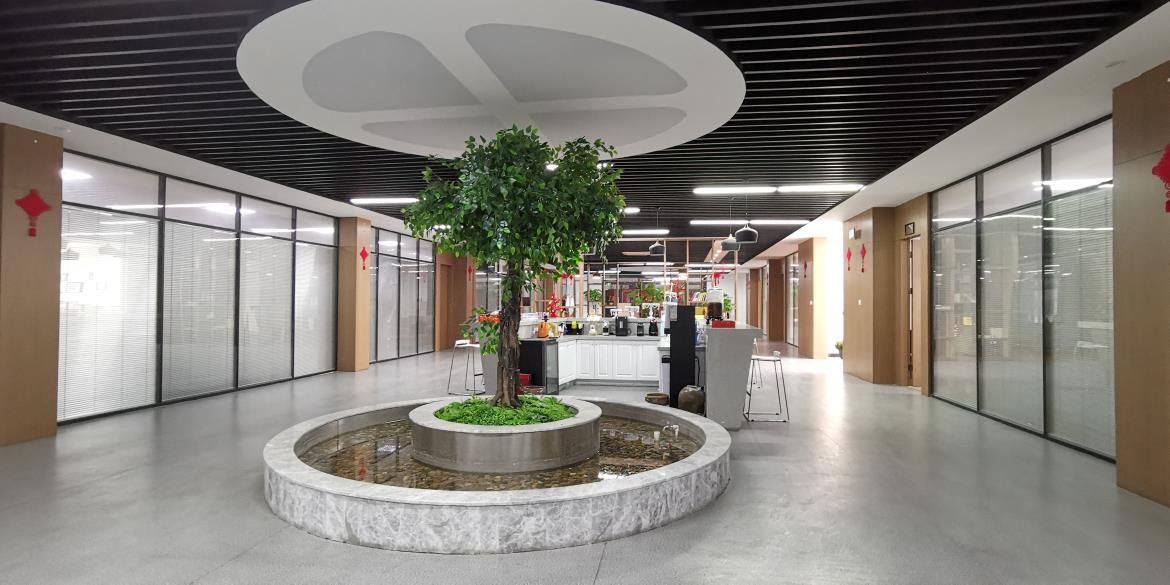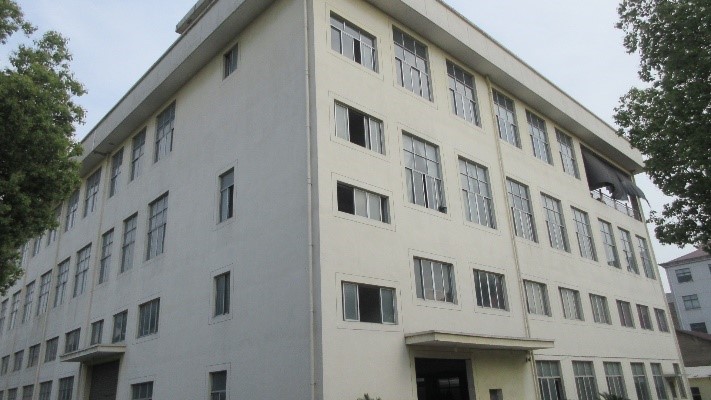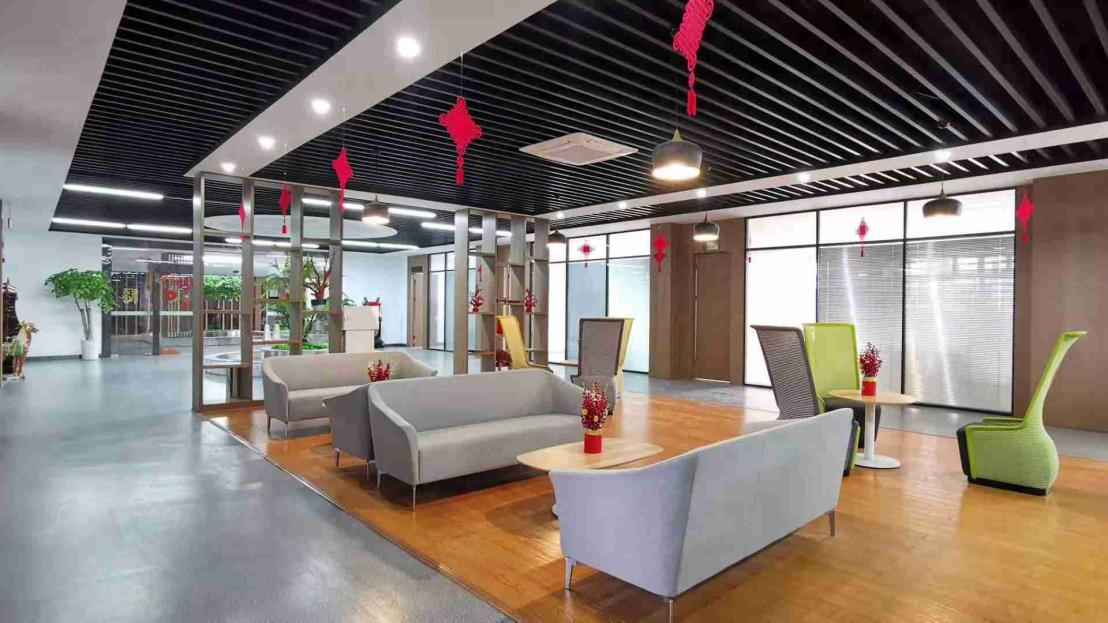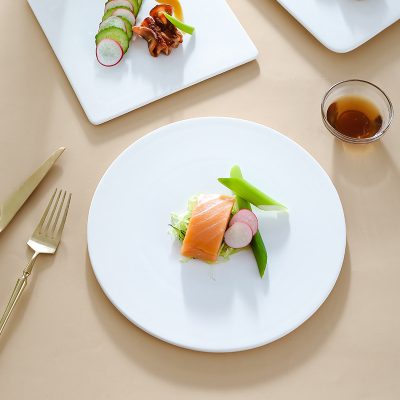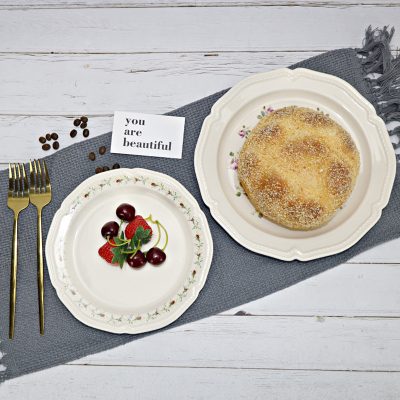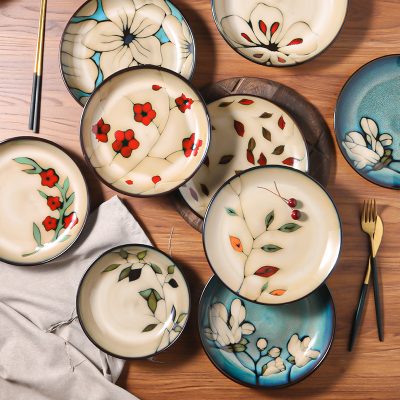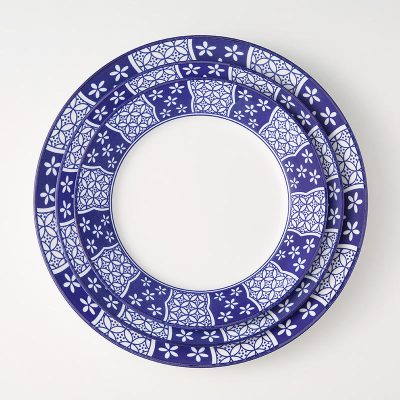
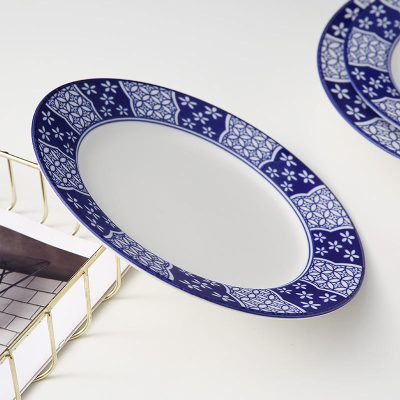
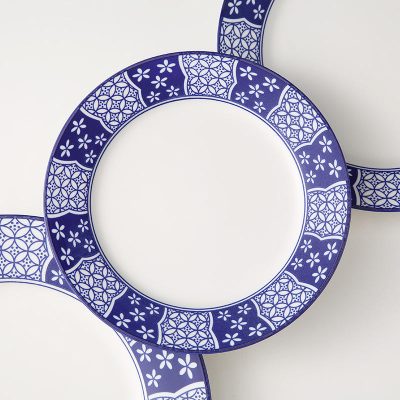
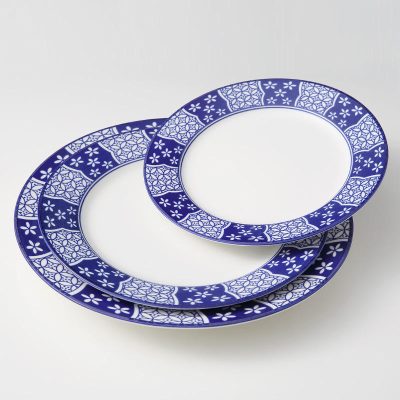
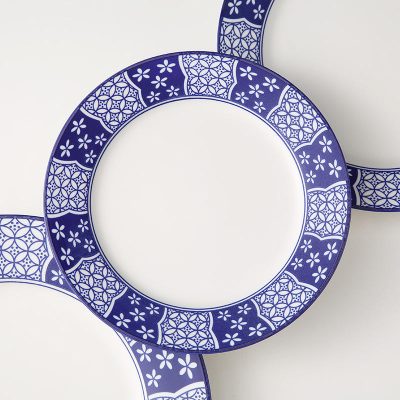
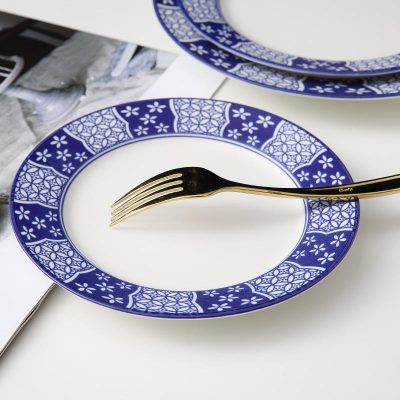
| Product Name | Ceramic Plates |
| Material | Ceramics |
| Size | 23.3*23.3*2.8 cm |
| MOQ | 10 |
| Style | Western |
| Packing | color box/bulk packing/postal packing |
| Grade | luxury |
| Logo | Accept Customized Logo |
| Feature | sustainable |
| Payment | TT |
| Design Style | Contemporary |
The shellfish porcelain is made of high white mud, high white glaze and shell powder through scientific formula and fired at a high temperature of more than 1200 degrees Celsius. Then it is painted and glazed again. After the second high temperature firing, it becomes non-toxic, lead-free, harmless and never fade, not easy to break, and is suitable for dishwasher washing. The glaze of shellfish porcelain tableware is white with blue, which is suitable for users of medium and low grade porcelain tableware. Color-glazed porcelain is painted directly on the embryo before the product is fired, and then fired at a high temperature. It belongs to underglaze color ceramics. The pattern on the porcelain is artificial color painting, which has artistic value. It is a tableware product with a different style from the porcelain above, providing more choices for disinfection centers that need special tableware. Ceramic is the general name of pottery and porcelain, and it is also a kind of arts and crafts in China. As far as the Neolithic Age, China has had rough and simple colored pottery and black pottery. Pottery and porcelain have different textures and properties. Pottery is made of clay with high viscosity and strong plasticity as the main raw material. It is opaque, has small pores and weak water absorption, and makes a loud sound when hit. Porcelain is made of clay, feldspar and quartz. It is translucent, non-hygroscopic and corrosion-resistant. Its body is hard and compact, and its knocking sound is crisp. China’s traditional ceramic arts and crafts are famous in the world for their high quality, beautiful shape and high artistic value.
Ceramic in English; Ceramic pinyin T á oc í; Ceramic is the general name of pottery and porcelain. Traditional ceramics, also known as ordinary ceramics, are products fired with clay and other natural silicates as the main raw materials. Modern ceramics are also known as new ceramics, fine ceramics or special ceramics. Commonly used non-silicate chemical raw materials or synthetic raw materials, such as oxides (alumina, zirconia, titanium oxide, etc.) and non-oxides (silicon nitride, boron carbide, etc.). Ceramics have many advantages, such as excellent insulation, corrosion resistance, high temperature resistance, high hardness, low density, radiation resistance, etc., and have been widely used in various fields of the national economy. Traditional ceramic products include daily-use ceramics, building and sanitary ceramics, industrial art ceramics, chemical ceramics, electrical ceramics, etc., with a wide variety and different performances. With the rise of high-tech industry, various new types of special ceramics have also made great progress, and ceramics have increasingly become excellent structural and functional materials. They have higher temperature resistance, mechanical properties, special electrical properties and excellent chemical resistance than traditional ceramics.
